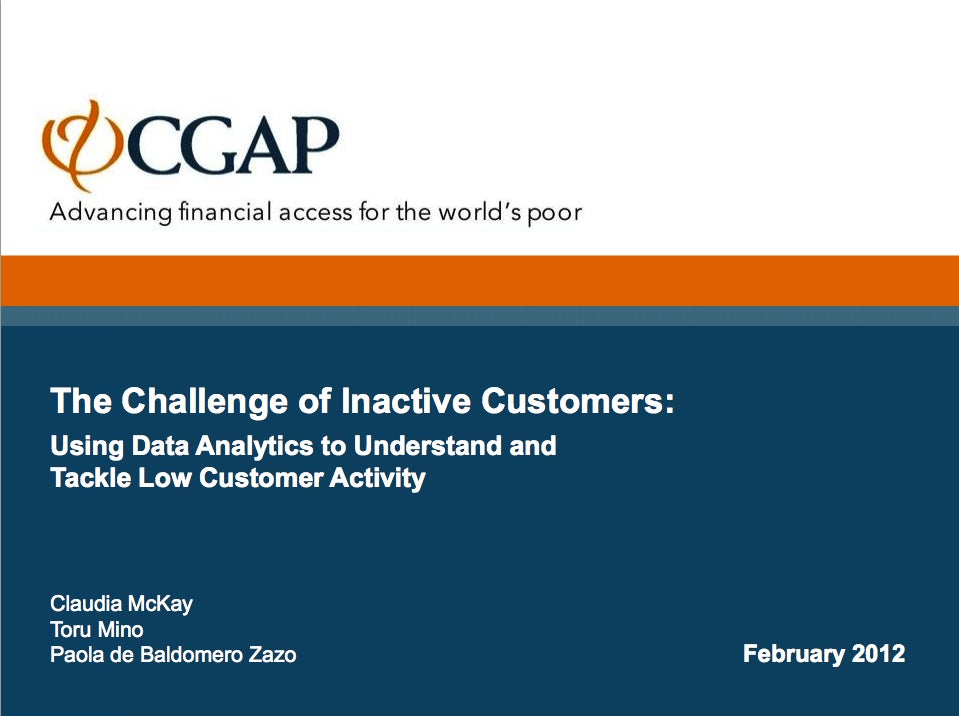Using Data to Understand Customer Activity
For the last year CGAP has conducted quantitative research on the challenge of inactive customers. In culmination of this research, we are releasing a deck that helps providers understand and develop strategies to address low customer activity in their services.
Regular readers of this blog are familiar with the challenge of low customer activity and the negative impact this has on the business case. Last year, CGAP released a framework to map how a potential customer moves from awareness to ongoing activity and all the different dimensions of a business required to make this successful. As we worked with providers to understand this problem, it became clear that one of the first steps was to help providers analyze the gold mine of information they already have about their own customers. Understanding customers is a complex undertaking and will ultimately rely on a variety of tools such as focus groups and surveys. Yet the starting point should be a data-driven understanding of current customer trends and segments which then highlights areas to research further.
 CGAP Research
CGAP Research
We worked with four providers in three regions to analyze customer registration, customer transaction and agent registration datasets. We conducted many different types of analysis – general activity trends, money transfer patterns and regression analyses to determine which factors are most correlated with high customer activity. The analysis revealed the untapped well of customer insights that providers have but most are not using.
This deck summarizes some of the most interesting findings on data analysis and customer activity across the providers. There are no magic bullets in the deck and, in fact, we found that data from providers in different markets was in some cases contradictory, highlighting that insights from one market are not automatically transferable to other markets. The deck does identify which types of data providers should be collecting, what types of analysis we found to be most useful in understanding activity levels and how providers can act on the data analysis with adjustments in service offerings or follow-on qualitative research.
Many results were consistent across multiple geographies and types of services. Some highlights:
- Super Users – Each service has a small but very loyal and highly active group of “super users” responsible for a higher proportion of total transactions. 5% of users were responsible for 30% of the total value transacted.
- Super Agents – The activity rate of customers registered by the best agents is over 40 times higher than those registered by the worst agents.
- Local transfers – About half (48%) of all transfers happen locally within the same province, indicating that P2P transfer patterns do not always follow the long-distance “send money home” pattern that we’ve seen in M-PESA Kenya.
- Demographics – Customer demographics have a significant impact on activity levels. Female customers are 41% more likely to be active than males. At one provider, activity rates for some occupation segments like students and farmers is three times the overall activity rate for the service.
Each of these items is a tantalizing nugget that suggests data-driven, actionable follow-on strategies that can be created to impact customer activity levels. In the next few weeks we will be writing about some of the most interesting findings in more detail. For now, check out the deck and consider how you or providers you work with can make better use of the data at hand to start tackling low customer activity.

- Claudia McKay & Toru Mino


Comments
This is the first effort I
This is the first effort I have seen to really amalgamate data on customer usage–and it is extremely telling. The most interesting thing to me here is usage–why are many not using the service after four months (with new customers masking high attrition rates)? How is this service not meeting their needs? Is it a financial capability problem?
Add new comment